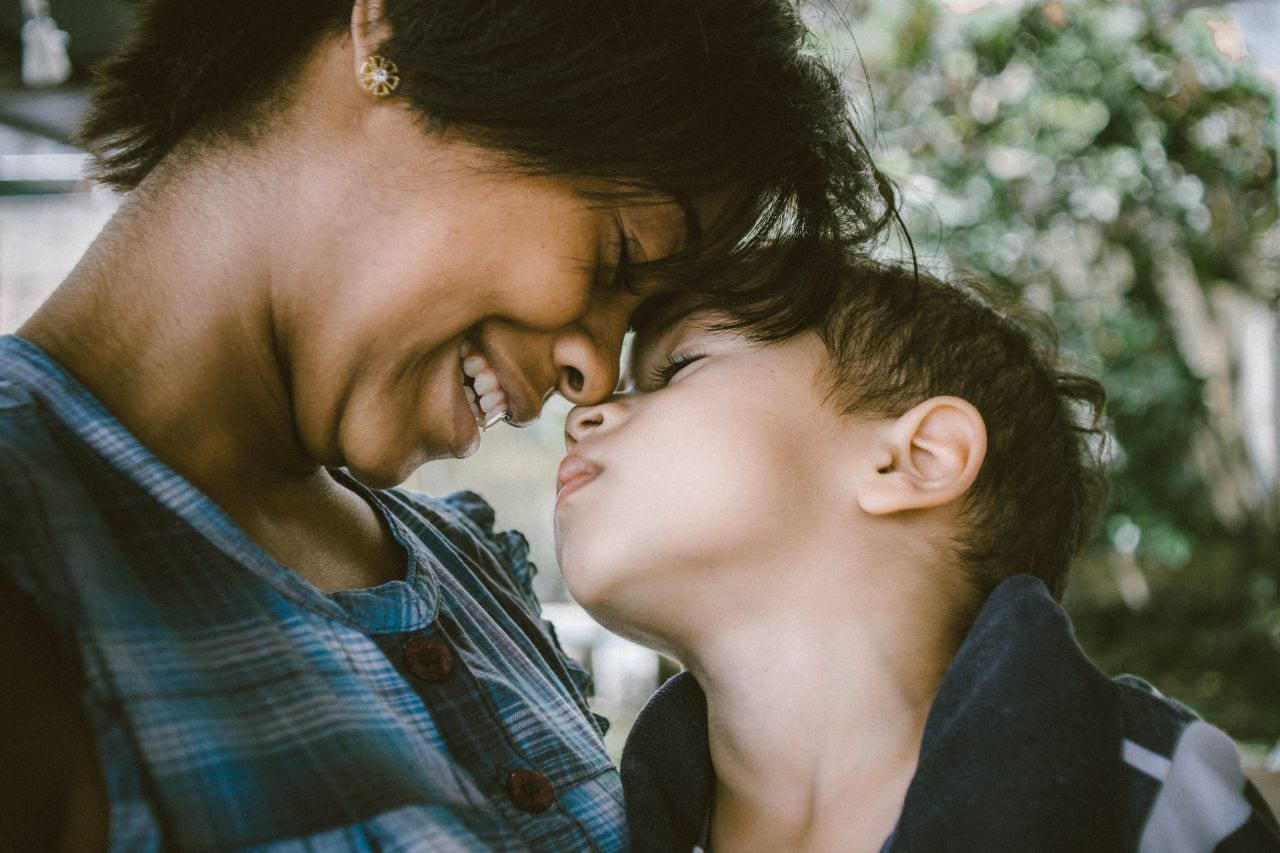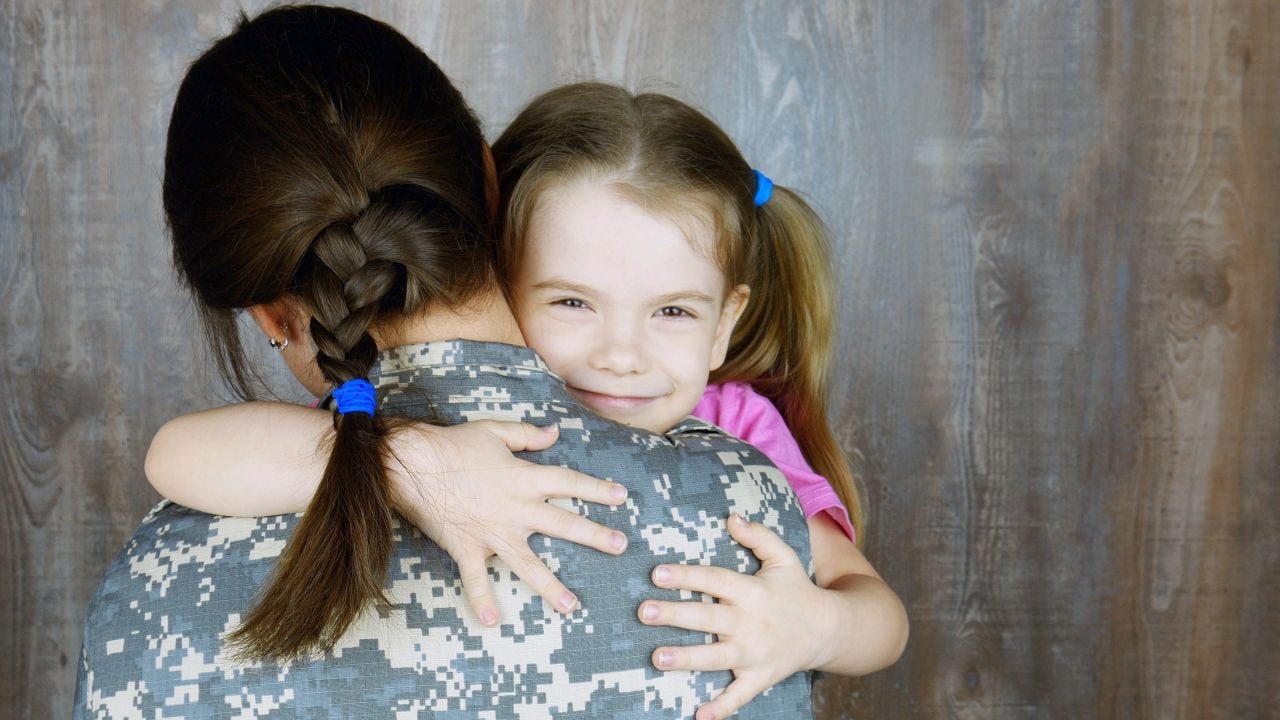Nobody, and I mean nobody, knows your child as well as you do. You're in a prime position to help them work through their problems and grow closer together as a result. The parent-child interaction therapy (PCIT) is a highly effective tool for this very purpose. Positive child interaction therapy (PCIT) has been found to be effective in helping children overcome developmental and behavioural problems while strengthening parent-child bonds. In this article, we'll explain what PCIT is and how it works so that you can decide if it's the right treatment for you and your loved ones.

What Exactly Is Meant by the Abbreviation "PCIT"
Parent-child interaction therapy (PCIT) is a behaviour therapy approach with a family focus that aims to improve parent-child interactions via increased communication and involvement. The focus of this approach is on the kid, which may lead to better family ties, healthier parenting, and fewer behavioural problems.
This strategy can help children who are at risk, have been mistreated, and have behavioural difficulties. As a bonus, this is good news for formerly mistreated kids. In addition, this method may help parents who bring their children to therapy to address the same concerns or to strengthen their bonds with their children.
Check this list of Rehabilitation Programmes to help you make an informed decision for your treatmen
Development Of PCIT
During her postdoctoral studies in paediatric psychology in the early 1970s, Sheila Eyberg essentially conceived of this method. It is theoretically grounded on both social learning theory and attachment theory. Cheryl McNeil, Toni Hembree-Kigin, Anthony Urquiza, Robin Gurwitch, and Beverly Funderburk are just a handful of the many key people that helped bring PCIT into reality.
A primary goal of Eyberg's early designs for the system was to integrate play therapy and other behavioural treatment techniques wherever practical. However, she quickly realised that combining principles from the two techniques would need a fresh framework and a unifying theory. Authoritarian rearing was the focus of Diana Baumrind's developmental research, which informed her final hypothesis. As an author in her own right, she added to Constance Hanf's canon. With the goal of standardising PCIT, a two-phase behavioural programme for teaching mothers of children with developmental delays was created. This course was designed to teach moms better ways to take care of their family.
In 1974, Eyberg gave her method a name, "Person-Centered Interventions and Therapies," after trying it out with the Alcohol, Drug Abuse, and Mental Health Association. The promising findings of this research, together with support from the National Institute of Mental Health, allowed for the next three decades to be spent studying and expanding PCIT. One of the most effective and widely endorsed treatment approaches in the modern period is patient-centered interdisciplinary team therapy (PCIT).
How Does The Pcit System Function?
Parent-Child Interaction Therapy (PCIT) helps parents develop the skills they need to give their kids a happy, healthy, and secure home environment. Parents may provide a more loving environment for their children if they learn these skills. The ultimate goal of this approach is to help people shift their behaviour from less desired to more desirable patterns.
Typically, a PCIT course will have two parts: the first will focus on making connections, while the second will go through the ground rules. At the beginning of the programme, the therapist will meet with the parents individually to go through the fundamental ideas and strategies that will be employed throughout the duration of the therapy. The next step is for the therapist to utilise a one-way mirror to see the parents in action as they implement the strategies and techniques with their young charges. Additionally, the therapist offers live counselling to the families through ear bug device. Finally, by keeping track of the desired behaviours over time and charting the outcomes on a graph, parents and children's efforts may be proven to be beneficial.
The PCIT phase focuses on teaching parents how to enhance their connection in order to mitigate the negative effects of any problems that may have arisen. Moreover, it teaches kids how to communicate better and how to take on new behaviours, both of which are good rewards. In order to make these habits second nature, parents should have their kids practise them regularly. As a result, many parents claim to have noticed significant changes in their kid's behaviour and the quality of their connection with their child after applying PCIT.
PCIT Techniques
Parent-Child Interaction Therapy (PCIT) helps parents develop the skills they need to give their kids a happy, healthy, and secure home environment. Parents may provide a more loving environment for their children if they learn these skills. The ultimate goal of this approach is to help people shift their behaviour from less desired to more desirable patterns.
Typically, a PCIT course will have two parts: the first will focus on making connections, while the second will go through the ground rules. At the beginning of the programme, the therapist will meet with the parents individually to go through the fundamental ideas and strategies that will be employed throughout the duration of the therapy. The next step is for the therapist to utilise a one-way mirror to see the parents in action as they implement the strategies and techniques with their young charges. Additionally, the therapist offers live counselling to the families through ear bug device. Finally, by keeping track of the desired behaviours over time and charting the outcomes on a graph, parents and children's efforts may be proven to be beneficial.
The PCIT phase focuses on teaching parents how to enhance their connection in order to mitigate the negative effects of any problems that may have arisen. Moreover, it teaches kids how to communicate better and how to take on new behaviours, both of which are good rewards. In order to make these habits second nature, parents should have their kids practise them regularly. As a result, many parents claim to have noticed significant changes in their kid's behaviour and the quality of their connection with their child after applying PCIT.
- Adult shows their approval of the child's good or appropriate behaviour by praising them.
- Repetition and elaboration on the child's words by the parents makes it easier for all three to communicate.
- When parents mimic their children, it serves as a means of teaching and conveying information.
- A parent who takes the time to describe what their child is doing shows interest in their child's activities and helps their youngster expand his or her vocabulary.
- If a parent is having a good time, they will show it by becoming involved in their kid's activities wholeheartedly.
Parents are trained to disregard as inconsequential any undesirable behaviours displayed by their children that do not represent a serious risk to the safety of the kid. They are also cautioned against using negative language like "don't" or "can't." When a parent has shown mastery of these skills, they move on to Phase II of the programme.
Parents are responsible for keeping an eye on their children and making sure they follow the guidelines (parent-directed interaction). It teaches parents how to train their kids with minimal fuss and maximum effectiveness by using clear rules and regular punishments. A parent may say, "Thank you for listening to me," if their child follows instructions and puts away their toys, for instance. If a child is disobedient, a parent could threaten them with a time-out until they "clean up their toys." A time-out provision is triggered when a party persistently breaches the conditions of a contract.
Addressing Self-Esteem
In a therapeutic context, PCIT focuses on mending interpersonal ties. Working with children who suffer from ADD/ADHD or avoidant anxiety, I frequently employ Eyberg's CDI and PRIDE skills as the foundation of my treatment. CDI and PRIDE have synergized to boost kids' confidence, self-worth, and prosocial abilities (to manage both disruptive and anxious-avoidant behaviours). If a youngster can trust another person, that might boost their sense of value, confidence, and self-worth. The youngster will feel less anxious, have more control over disruptive urges, and more frequently employ age-appropriate social skills.
Negative reinforcement is used so frequently with ADHD children that it can seriously damage their self-esteem. Don't feel obligated to touch anything and everything on display. You can disregard your enquiry about our swimming abilities. "Are you going to stop bothering your sister, please?" 'Why don't you just act like a normal person for a change?' Nearly four times as much positive reinforcement as corrective feedback increases a child's likelihood of complying with instructions like "don't ask that question" or "don't harass your sister."
Incorrectly attributing unpleasant attitudes and words to actual persons might lead to low self-esteem for children with avoidant anxiety disorders. A positive reinforcement strategy can reduce anxiety in these young people. When people are less anxious, they are better able to put into practise the more theoretical strategies they have learned in therapy (such as cognitive behaviour therapy, or CBT) to deal with their fears and concerns (such as "leave the house," "keep eye contact," "use complete sentences" rather than one-word answers, and so on). Because of this, people are better able to manage their anxiety.
Though PCIT may be used on its own, I find that it works best when combined with other therapies including operant conditioning, exposure, and cognitive behavioural therapy. Naturally, whether or not CBT is used with a child relies on the child's degree of mental development and its capacity to grasp the more abstract counselling tactics. In most cases, this ability doesn't manifest itself until the seventh or eighth year.
Putting In Place Cdi And Pride Alongside Pcit
The term "child selects," which is more colloquial, is used by some experts to describe CDI. No inquiries or directions should be offered to the youngster until CDI has been used for at least three minutes. Although there may be some differences in wording, this general rule remains unchanged. A child's sense of self-worth is bolstered when they are not subjected to negative reinforcement when they adjust to a new setting or experience.
Growing up, children who have a strong feeling of self-worth are more inclined to do what they're supposed to. "Child-directed interaction" (CDI) refers to situations in which adults do not direct children's play. If the kid's behaviour indicates that the presence of the adult seems to annoy or heighten the child's fear, the adult will provide the youngster with some physical distance. This responsible adult might be a mentor figure in the form of a teacher, parent, or guidance counsellor. A minimum of three minutes of child-directed interaction (CDI) is required before the adult may resort to verbal PRIDE skills when it appears the child's emotions are more under control. PRIDE encourages adults to offer children with labelled praise, reflection, imitation, description, and pleasure. According to the PRIDE model, it is equally important for grown-ups to impart these ideas to their offspring.
This blog post will help you make an informed decision about Rehab Treatment Melbourne fees for different treatments.
In order to better visualise how this might work in a real-world school setting, let's imagine that "Alison" spends the first period of the school day in the homeroom. Every day at the therapeutic school where I work, the kids gather to go through the day's tasks, eat breakfast together, practise coping strategies, meet with teachers and therapists, and work on their interpersonal skills with their peers. Students immediately encounter CDI as soon as they step foot into the institution.
As soon as Alison walks in the door, she throws her luggage to the floor and goes straight to her desk (her backpack is not where it is supposed to be, plus it is open, with its contents falling out). The CDI process will already be underway by the time Alison enters the classroom for the first time, so the teacher has been instructed not to ask her to move the backpack just yet. (Consider how you'd react if your first conversation with a new acquaintance involved them suggesting that you change something about who you are.)
Alison is snacking on an apple when a student approaches her desk and asks for paper. Alison hands the paper on to her colleague without speaking and without even looking at her pal. She finishes her apple and gets up to toss it. Then she realises the notebook with her homework assignments is under her desk, so she goes to retrieve it. Alison's backpack is open on the floor, and papers, food, and other items are spilling out. However, the teacher does not offer her any particular directions until after she has demonstrated the entire spectrum of PRIDE skills, which are as follows:
- Be polite and appreciate those who are polite to you. One possible response is, "Thank you, Alison, for sending Sarah a copy of your paper." I really appreciate how kind you were by getting rid of that fruit. Either you are really diligent or you remembered to take your notepad out of your backpack and jot down your assignments. You have an incredible memory. This group, which they named "praise," consisted of the people who made Alison feel good about herself on a mental and emotional level. This made her less apprehensive and taught her to better regulate her emotions and actions.
- Think about how significant it is to use proper language. That's right, when an adult does this, they're basically repeating the child's words back to them. What time is the next fire drill?" After filling out her homework on the assignment pad, Alison turns to her teacher with a question. It is the role of the educator to convey the overall significance of the study. The teacher may say something like, "That's great that you want to be prepared for the fire drill and want to know when it will take place. That's a really responsible action on your side. It is currently 9 o'clock at night. To show children that you are paying attention to what they have to say, reflection is essential. When people feel heard, they experience a decrease in anxiety and an increase in self-assurance. The educator singled out Alison for special recognition due to her preparedness and diligence.
- Set a good example by acting and reacting appropriately. For instance, if Alison pulls out some paper and coloured pencils at the appropriate time, she may utilise this creative outlet to help her deal with the stress of being a "capacity to "silently cope," and the teacher will remember how to have her use this method again in the future. Except for Alison's artwork, I had entirely forgotten about it. We can pick up where we left off with our drawing game after all of the homeroom students have arrived. Since you are the only one who understood the previous iteration of the game and you are a brilliant artist, would you be willing to assume command? Alison believes she has the teacher's regard by engaging in a hobby shared by both of them (artwork). Alison can unwind and feel better as a result of this. She now feels more at ease in her own skin thanks to the realisation that she is capable of shaping her own destiny.
- Here is an excellent time to discuss this person's demeanour. Telling the child in detail what they did is a terrific approach to express interest in them and validate their actions. All of these factors work together to make the child feel more confident and calm. The instructor may say anything like, "You are painting a high-performance sports vehicle against a mountain backdrop. It conveys a sense of swiftness and aggression while still seeming calm. I think it says a lot about your photography and artistic skills that you managed to capture the whole event in a single frame. An additional group of labelled compliments highlighting Alison's creative spirit are included in this characteriszation.
- Enthusiasm: The capacity to lift the spirits of those around you is a key factor in attracting a large audience. Together, you and the child's ability to experience happiness in a variety of situations will become stronger. Also, the youngster will be more attentive to any advice you have for improvement.
- During CDI time, Alison may eat her apple, enquire about the fire drill, or pick out a piece of paper to sketch. When a teacher has employed both CDI and PRIDE and has progressed to adult-directed engagement, they have a great deal of freedom and autonomy.
- Do you still have Alison's math homework from last night?
- Details (especially how to deal with the backpack) are needed. "Put your backpack in your locker and close it, Alison. It will, in a word, simplify our life a lot. It would be devastating to me if any of your possessions went missing or if someone got harmed on your property." Teacher may tell Alison, "Thank you for being obedient," as a labelled complement, after she demonstrates that she has followed the regulation to the letter. Use caution when closing a conversation with "Thank you for listening;" this phrase should only be used in appropriate circumstances. Differentiating "listeners" from "followers" is a difficult task.
Frequently Asked Questions
The goals of the Child-Directed Interaction component of Parent-Child Interaction Therapy (PCIT) are as follows: Establish intimate relationships between parents and their children by employing tactics that focus on providing positive attention. Fostering an environment of love and comfort between parents and their children can help children feel more at ease and safe.
Beginning in infancy, the parent-child interactions serve as the major setting for the child's social learning. Interactions between parents and children are often the initial setting in which several social-cognitive and socio-emotional processes, such as the regulation and recognition of emotions, referencing, gaze following, pointing, and communicating, are observed.
The treatment consists of two phases: the relationship phase (also known as Child-Directed Interaction), in which parents learn to master their parenting skills, and the discipline phase, in which parents learn to master their parenting abilities (Parent Directed Interaction).
Interaction therapy between parents and children is widely recognised as one of the most productive evidence-based techniques now available in the area. Parents are able to acquire more successful parenting techniques when they participate in in vivo training, which also helps children with behavioural issues and contributes to the development of a more pleasant and affectionate relationship between the family members.
It is essential for the development of children to have the opportunity to engage in social activities with their parents. Children acquire important life skills through their interactions with their parents, including the ability to cooperate with others, share, and respect the property of others. In addition, verbal and nonverbal communication abilities are among the first to be developed in young children.
In What Ways Can Pcit Assist?
The efficacy of PCIT has been shown through the course of a number of investigations. For instance, in a study conducted in 2011 on children aged 8 to 10 years old who were diagnosed with certain language deficits, researchers found that those children treated with PCIT experienced better language gains than the children in the control group. In the second study, which took place in 2011, 150 women with a history or high risk of mistreating their children were split into two groups. Each group consisted of 50 moms. After a period of 12 weeks, the moms who took part in PCIT were found to have improved interactions with their children, and they indicated that their children exhibited improved behaviour and that they experienced less stress.
This method, which has been shown to have the greatest impact on children between the ages of 2 and 7, is considered an effective method of addressing common childhood behavioural issues such as aggression, defiance, short temper, and non-compliance. It has been shown that this method has the greatest impact on children between the ages of 2 and 7. Additionally, Parent-Child Interaction Therapy encourages healthy interactions between parents and children, and it has become an intervention that is extensively used for many families that are at risk. PCIT is a therapeutic method that is frequently utilised with foster and adoptive families as well as by persons who are involved in the system of child welfare; however, any family that is experiencing difficulties with the contact between parent and kid may find that PCIT is useful. Research suggests that PCIT may be of particular use in the following situations:
- Creating constructive connections between parents and children and cultivating constructive approaches to child parenting
- lowering the likelihood that children will be verbally or physically abused
- Reducing problems caused by children's behaviour (anger, aggression, defiance, etc.)
- Improving family members' abilities to talk to one another and get along with one another
Children who take part in PCIT may acquire a higher sense of self-esteem, experience less anger and frustration, witness an improvement in social, organisational, and play abilities, feel safer and calmer, and improve their ability to communicate. In addition, parents often learn regular and predictable approaches for parenting and may experience better confidence when addressing behavioural difficulties, whether they occur in public or at home. This is true whether the parenting takes place in a public setting or at home.

Concerns Regarding the PCIT, Along With Its Limitations
PCIT is a treatment that is supported by evidence and is seen as a therapeutic technique that is effective for a variety of problems. PCIT might not be necessary in situations when parents have very little or no contact with their offspring. It is possible that parents who have hearing or language difficulties or who are experiencing severe mental health concerns (for instance, a condition that is characterised by hallucinations or delusions) will notice little to no change as a result of participating in PCIT. In addition, PCIT may not be recommended in situations when one or both of the parents have a problem with substance misuse, have a history of being sexually abusive or physically violent in a sadistic manner, or both.
The combination of CDI skills, PRIDE skills, and adult-directed interaction should be used on a consistent basis in the child's home environment, as well as during play dates at the homes of others, during school and community events, and, of course, in the therapy office. Because PRIDE continues to function as a mode of communication, it does not cease to exist once the dialogue has begun. Once emotional regulation has been achieved in the therapy office through a combination of CDI, PRIDE, and adult-directed interaction, the therapist can remind the child of the operant conditioning plan, then work on CBT skills or exposure skills to continue building strategies to manage impulsivity or anxiety. Once emotional regulation has been achieved, the therapist can remind the child of the operant conditioning plan.
Stimulant medication is likely to be prescribed by a psychiatrist if it can be demonstrated that the symptoms of attention deficit hyperactivity disorder (ADHD) in children significantly impede the children's ability to function socially and academically on a regular and persistent basis. ADHD is a neurological illness that has its roots in genetics and can manifest itself in a number of different areas of the brain. Medication may be able to alleviate some of these symptoms, particularly those related to disturbances in dopamine and norepinephrine, but it cannot change everything. In addition, even for the regions of the brain that can be treated with medicine, this does not ensure that symptoms will not be present. Because of this, it is absolutely necessary to carry on utilising therapeutic such like antecedent management and counselling procedures in order to assist children in functioning in the many situations they are exposed to.
In terms of anxiety, a selective serotonin reuptake inhibitor is likely to be the medication of choice for patients who are experiencing impairment in their social and educational settings on an intense, frequent, and chronic level. This type of medication is the first line of defence for treating anxiety (SSRI). The serotonin region of the brain is the primary site of dysfunction (in addition to anxiety affecting norepinephrine, glutamate and the limbic system structures of the hippocampus, hypothalamus and amygdala). One more time, though, taking an SSRI won't ensure that you won't experience any symptoms. That's why other approaches to treatment, including exposure therapy and counselling, are still essential.
Looking for the best rehab centre? Refocus Rehab Melbourne might be the answer.
Conclusion
Positive child interaction therapy (PCIT) has been found to be effective in helping children overcome developmental and behavioural problems. PCIT aims to improve parent-child interactions via increased communication and involvement. This strategy can help children who are at risk, have been mistreated, and have behavioural difficulties. Parent-Child Interaction Therapy (PCIT) helps parents develop the skills they need to give their kids a happy, healthy, and secure home environment. The ultimate goal of this approach is to help people shift their behaviour from less desired to more desirable patterns.
Parent-Child Interaction Therapy (PCIT) helps parents develop the skills they need to give their kids a happy, healthy, and secure home environment. PCIT also teaches kids how to communicate better and how to take on new behaviours, both of which are good rewards. Parents are trained to disregard as inconsequential any undesirable behaviours that do not represent a serious risk to the safety of the kid. When a parent has shown mastery of these skills, they move on to Phase II of the programme. PCIT aims to boost kids' confidence, self-worth, and prosocial abilities.
A positive reinforcement strategy can reduce anxiety in young people with avoidant anxiety disorders. PCIT works best when combined with other therapies including operant conditioning and exposure. A minimum of three minutes of child-directed interaction (CDI) is required before the adult may resort to verbal PRIDE skills. When people feel heard, they experience a decrease in anxiety and an increase in self-assurance. Alison believes she has the teacher's regard by engaging in a hobby shared by both of them (artwork) She now feels more at ease in her own skin thanks to the realisation that she is capable of shaping her own destiny.
The capacity to lift the spirits of those around you is a key factor in attracting a large audience. Telling the child in detail what they did is a terrific approach to express interest in them and validate their actions. Together, you and the child's ability to experience happiness in a variety of situations will become stronger. The efficacy of PCIT has been shown through the course of a number of investigations. It is considered an effective method of addressing common childhood behavioural issues such as aggression, defiance, short temper, and non-compliance.
PCIT is frequently used for foster and adoptive families as well as persons involved in the system of child welfare. The PCIT involves a combination of CDI, PRIDE and adult-directed interaction with the child. Because PRIDE continues to function as a mode of communication, it does not cease to exist once the dialogue has begun. Once emotional regulation has been achieved, the therapist can remind the child of the operant conditioning plan. ADHD is a neurological illness that has its roots in genetics and can manifest itself in a number of different areas of the brain. Medication may be able to alleviate some of these symptoms, particularly those related to disturbances in dopamine and norepinephrine, but it cannot change everything.
Content Summary
- The parent-child interaction therapy (PCIT) is a highly effective tool for this very purpose.
- Positive child interaction therapy (PCIT) has been found to be effective in helping children overcome developmental and behavioural problems while strengthening parent-child bonds.
- In this article, we'll explain what PCIT is and how it works so that you can decide if it's the right treatment for you and your loved ones.
- What Exactly Is Meant by the Abbreviation "PCIT"Parent-child interaction therapy (PCIT) is a behaviour therapy approach with a family focus that aims to improve parent-child interactions via increased communication and involvement.
- This strategy can help children who are at risk, have been mistreated, and have behavioural difficulties.
- It is theoretically grounded on both social learning theory and attachment theory.
- One of the most effective and widely endorsed treatment approaches in the modern period is patient-centered interdisciplinary team therapy (PCIT).How Does The Pcit System Function?Parent-Child Interaction Therapy (PCIT) helps parents develop the skills they need to give their kids a happy, healthy, and secure home environment.
- Parents may provide a more loving environment for their children if they learn these skills.
- The ultimate goal of this approach is to help people shift their behaviour from less desired to more desirable patterns.
- Typically, a PCIT course will have two parts: the first will focus on making connections, while the second will go through the ground rules.
- At the beginning of the programme, the therapist will meet with the parents individually to go through the fundamental ideas and strategies that will be employed throughout the duration of the therapy.
- Finally, by keeping track of the desired behaviours over time and charting the outcomes on a graph, parents and children's efforts may be proven to be beneficial.
- The PCIT phase focuses on teaching parents how to enhance their connection in order to mitigate the negative effects of any problems that may have arisen.
- Moreover, it teaches kids how to communicate better and how to take on new behaviours, both of which are good rewards.
- As a result, many parents claim to have noticed significant changes in their kid's behaviour and the quality of their connection with their child after applying PCIT.PCIT Techniques
- Parent-Child Interaction Therapy (PCIT) helps parents develop the skills they need to give their kids a happy, healthy, and secure home environment.
- The PCIT phase focuses on teaching parents how to enhance their connection in order to mitigate the negative effects of any problems that may have arisen.
- Moreover, it teaches kids how to communicate better and how to take on new behaviours, both of which are good rewards.
- As a result, many parents claim to have noticed significant changes in their kid's behaviour and the quality of their connection with their child after applying PCIT.Adult shows their approval of the child's good or appropriate behaviour by praising them.
- Repetition and elaboration on the child's words by the parents makes it easier for all three to communicate.
- They are also cautioned against using negative language like "don't" or "can't."
- It teaches parents how to train their kids with minimal fuss and maximum effectiveness by using clear rules and regular punishments.
- Addressing Self-EsteemIn a therapeutic context, PCIT focuses on mending interpersonal ties.
- Working with children who suffer from ADD/ADHD or avoidant anxiety, I frequently employ Eyberg's CDI and PRIDE skills as the foundation of my treatment.
- CDI and PRIDE have synergized to boost kids' confidence, self-worth, and prosocial abilities (to manage both disruptive and anxious-avoidant behaviours).
- Negative reinforcement is used so frequently with ADHD children that it can seriously damage their self-esteem.
- Don't feel obligated to touch anything and everything on display.
- Nearly four times as much positive reinforcement as corrective feedback increases a child's likelihood of complying with instructions like "don't ask that question" or "don't harass your sister."
- Incorrectly attributing unpleasant attitudes and words to actual persons might lead to low self-esteem for children with avoidant anxiety disorders.
- A positive reinforcement strategy can reduce anxiety in these young people.
- A child's sense of self-worth is bolstered when they are not subjected to negative reinforcement when they adjust to a new setting or experience.
- A minimum of three minutes of child-directed interaction (CDI) is required before the adult may resort to verbal PRIDE skills when it appears the child's emotions are more under control.
- This blog post will help you make an informed decision about Rehab Treatment Melbourne fees for different treatments.
- In order to better visualise how this might work in a real-world school setting, let's imagine that "Alison" spends the first period of the school day in the homeroom.
- However, the teacher does not offer her any particular directions until after she has demonstrated the entire spectrum of PRIDE skills, which are as follows:Be polite and appreciate those who are polite to you.
- Think about how significant it is to use proper language.
- After filling out her homework on the assignment pad, Alison turns to her teacher with a question.
- It is the role of the educator to convey the overall significance of the study.
- The teacher may say something like, "That's great that you want to be prepared for the fire drill and want to know when it will take place.
- To show children that you are paying attention to what they have to say, reflection is essential.
- The educator singled out Alison for special recognition due to her preparedness and diligence.
- Set a good example by acting and reacting appropriately.
- For instance, if Alison pulls out some paper and coloured pencils at the appropriate time, she may utilise this creative outlet to help her deal with the stress of being a "capacity to "silently cope," and the teacher will remember how to have her use this method again in the future.
- Except for Alison's artwork, I had entirely forgotten about it.
- Alison believes she has the teacher's regard by engaging in a hobby shared by both of them (artwork).
- Here is an excellent time to discuss this person's demeanour.
- Telling the child in detail what they did is a terrific approach to express interest in them and validate their actions.
- All of these factors work together to make the child feel more confident and calm.
- Enthusiasm: The capacity to lift the spirits of those around you is a key factor in attracting a large audience.
- Together, you and the child's ability to experience happiness in a variety of situations will become stronger.
- Also, the youngster will be more attentive to any advice you have for improvement.
- When a teacher has employed both CDI and PRIDE and has progressed to adult-directed engagement, they have a great deal of freedom and autonomy.
- Put your backpack in your locker and close it, Alison.
- Teacher may tell Alison, "Thank you for being obedient," as a labelled complement, after she demonstrates that she has followed the regulation to the letter.
- Use caution when closing a conversation with "Thank you for listening;" this phrase should only be used in appropriate circumstances.
- Concerns Regarding the PCIT, Along With Its LimitationsPCIT is a treatment that is supported by evidence and is seen as a therapeutic technique that is effective for a variety of problems.
- PCIT might not be necessary in situations when parents have very little or no contact with their offspring.
- In addition, PCIT may not be recommended in situations when one or both of the parents have a problem with substance misuse, have a history of being sexually abusive or physically violent in a sadistic manner, or both.
- The combination of CDI skills, PRIDE skills, and adult-directed interaction should be used on a consistent basis in the child's home environment, as well as during play dates at the homes of others, during school and community events, and, of course, in the therapy office.
- Once emotional regulation has been achieved in the therapy office through a combination of CDI, PRIDE, and adult-directed interaction, the therapist can remind the child of the operant conditioning plan, then work on CBT skills or exposure skills to continue building strategies to manage impulsivity or anxiety.
- Stimulant medication is likely to be prescribed by a psychiatrist if it can be demonstrated that the symptoms of attention deficit hyperactivity disorder (ADHD) in children significantly impede the children's ability to function socially and academically on a regular and persistent basis.
- In addition, even for the regions of the brain that can be treated with medicine, this does not ensure that symptoms will not be present.
- In terms of anxiety, a selective serotonin reuptake inhibitor is likely to be the medication of choice for patients who are experiencing impairment in their social and educational settings on an intense, frequent, and chronic level.
- This type of medication is the first line of defence for treating anxiety (SSRI).
- That's why other approaches to treatment, including exposure therapy and counselling, are still essential.



















